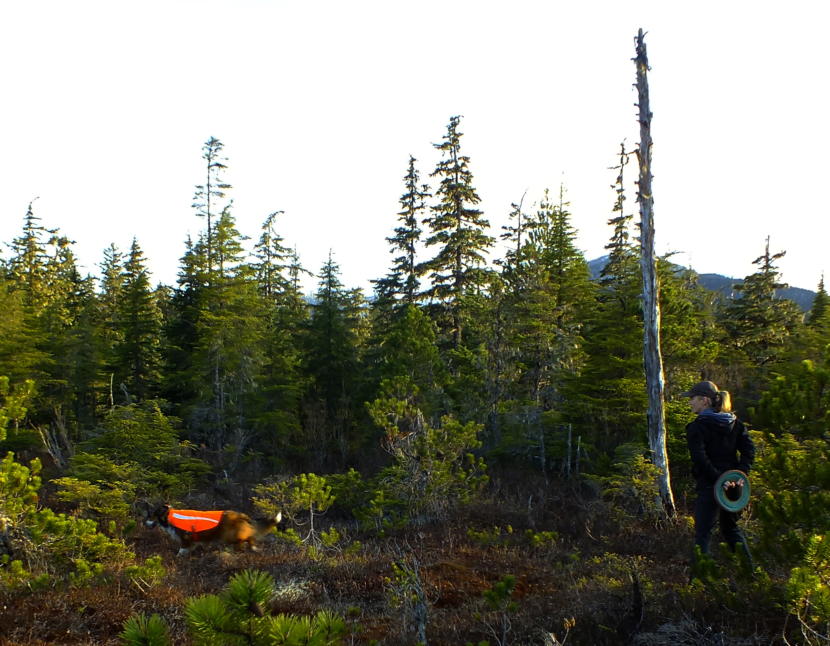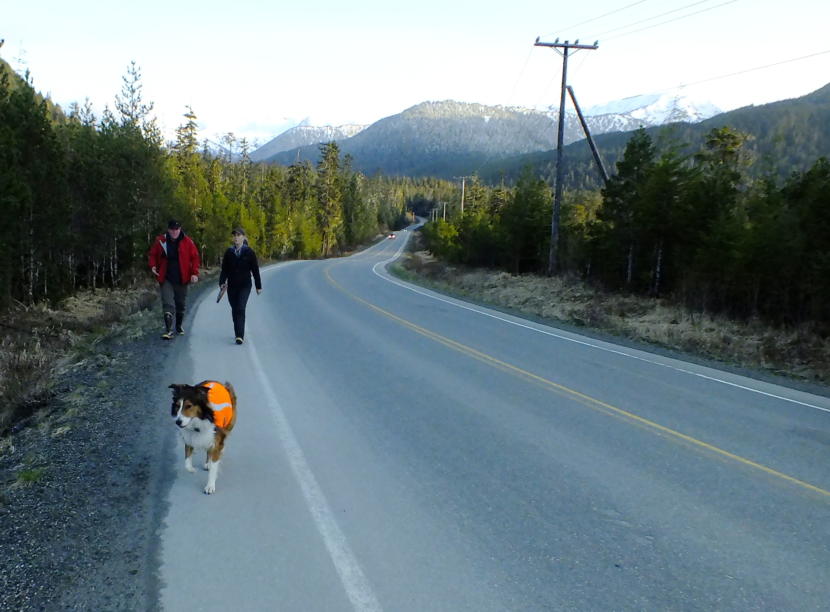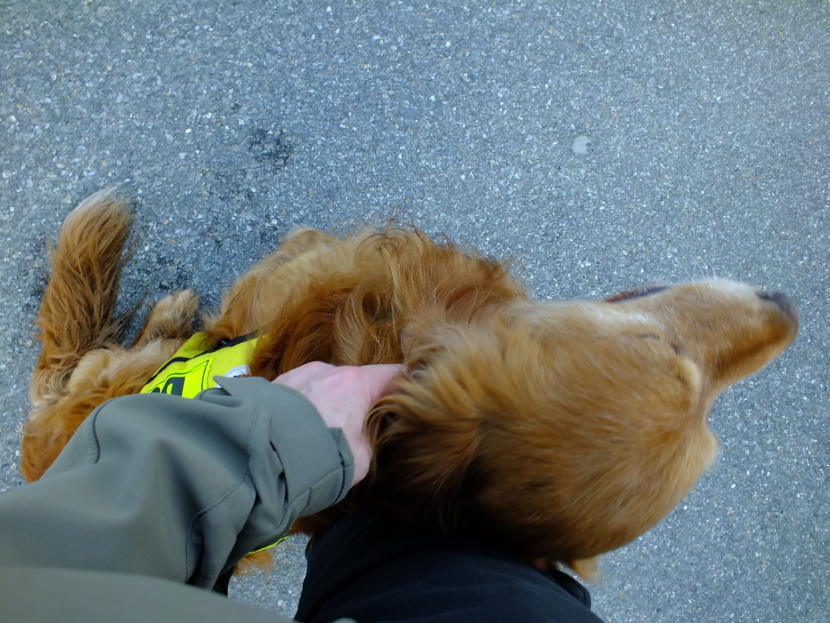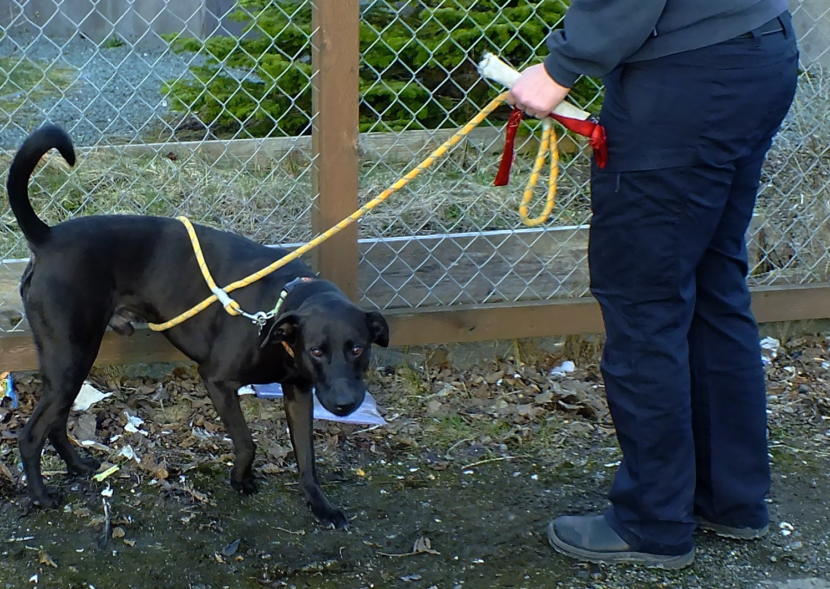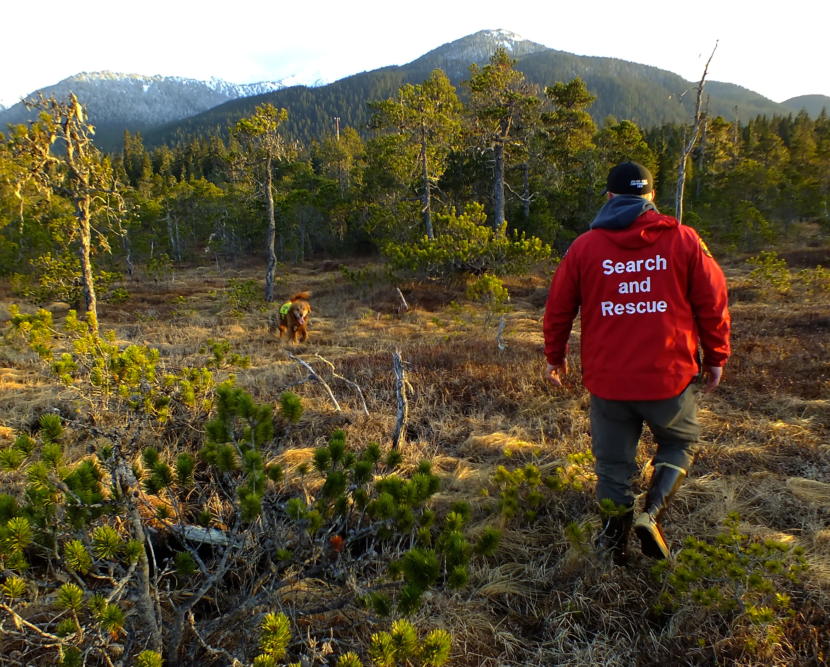
If you become lost or injured in Alaska, your best chance of being found may rest in the paws of an unassuming hero: a search dog. Man’s best friend has a superpowered sense of smell that can detect just about anyone, anywhere. Highly trained and ready to respond with their dedicated handlers at a moment’s notice, search dogs can’t brag about their abilities. The only reward they ask is a chance to play.
I learned more about the world of search dogs by – what else? – volunteering to get lost.
I crouch down against a wall and behind a couch in a darkened room in the back of a vacant building in Juneau.
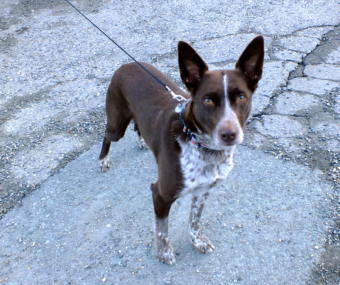
A few minutes later, I hear a dog enter the room. She climbs on top of the couch, then tentatively peeks around the end of it, sniffs at my microphone, and then barks.
“You did it. Good girl!” said Kerry Kirkpatrick, co-owner of Bizzy, a 5-year-old McNab California ranch dog.
She’s found me.
“Atta girl!” More praise from Kirkpatrick as she throws a ball for Bizzy to play with.
“I decided to get a small, fast dog because I’m getting slower,” said Mike Pilling, the other owner of Bizzy. “So, that dog is like lightning compared to a Lab.”
Juneau volunteers with SEADOGS, or Southeast Alaska Dogs Organized for Ground Search, do this training every week. It may be in a vacant building one week and then out in the muskeg the next.
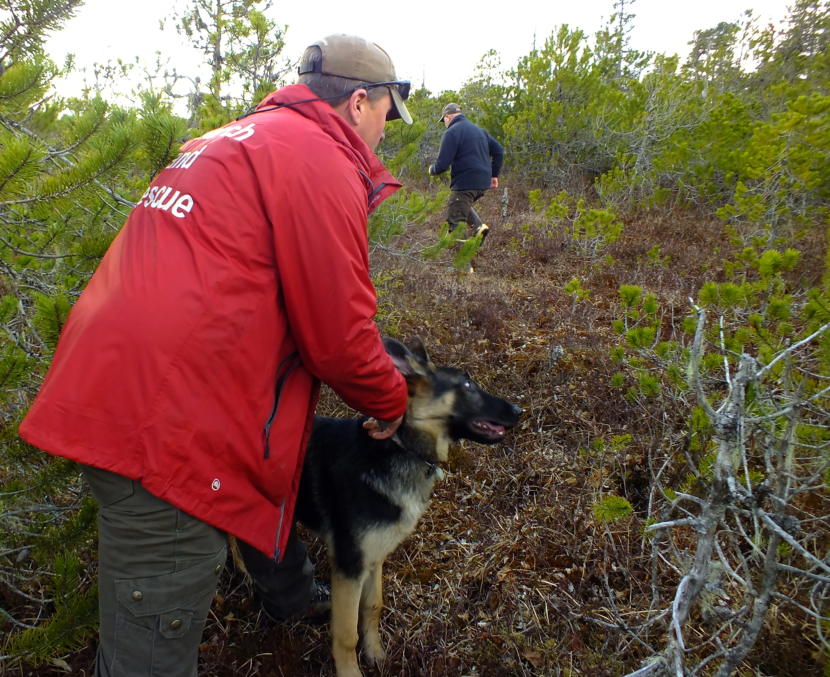
“They say you don’t practice until you get it right,” said SEADOGS Liam Higgins. “You practice until you can’t get it wrong. So, it’s just over and over and over again.”
Outside the building in a muskeg across town, Higgins is training Oskar, his 5-month-old German Shepherd, the very basics.
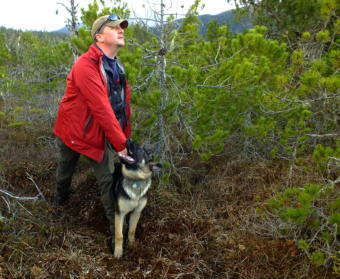
“Oskar! Where’s he going?” asks Higgins.
“Come get me,” yells Higgins’ friend A.J.
Higgins hands Oskar’s favorite toy to A.J., who then runs off and disappears into the brush.
Higgins tries to hold on to Oskar as he whines in excitement and anticipation.
“Find him!” commands Higgins.
We chase after Oskar as he goes upwind way past where A.J. is hiding, but then the dog circles around to pick up the scent again.
“Good boy! What a good boy!” praises Higgins.
Compared to a human, the part of the dog’s brain devoted to processing smells is as much as fifty times bigger. That’s why scientists believe a dog’s sense of smell is not just several times better, but several orders of magnitude – or as much as 100,000 times – better than ours.
Higgins says dogs can smell like we see.
“One example I was given was like when you come home and your significant other is making beef stew. You smell beef stew when you walk in the door,” Higgins said. “The dog smells beef, carrots, onions, potatoes, each ingredient individually the same as we would as if we looked in the pot.”
A dog’s sense of smell is so sensitive that they can locate a body underwater from the gases that rise to the surface. Or they can find someone buried in a mudslide or avalanche from a scent rising up through the soil or snow.
Higgins says searching the thick gooey mud of the 2015 Sitka landslide, as flowing water carried the scent away, was the most challenging work he and his dog ever did.
“So, it was kind of hard to know what search technique you should really focus on predominately because it was a little bit of everything,” Higgins said.
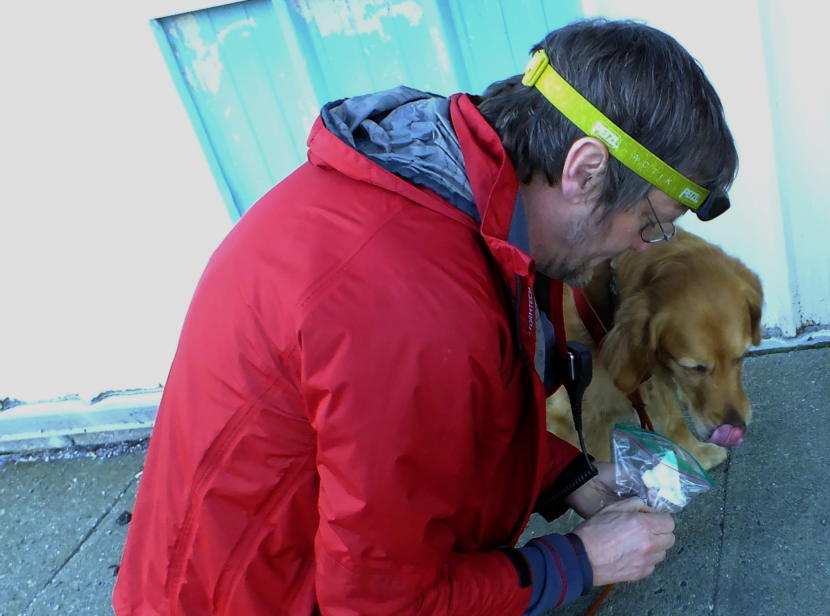
Teamwork is critical to the success of the dogs. Handlers must be aware of how terrain, water currents, wind and temperature changes affect a scent, and guide their dog to the best place for them to do their job.
“Take scent,” commands SEADOGS’ Geoff Larson.
For some dogs, the job is not just to find anyone – but to find a particular person. Inside the building where Bizzy found me, Larson is introducing Tango, his 4-year-old Golden Retriever, to a piece of gauze rubbed with the scent of a missing girl.
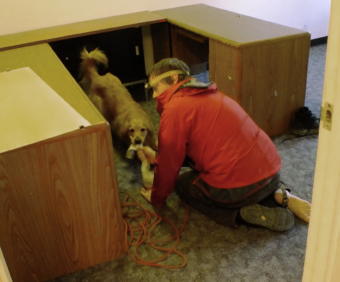
“Tango, track!” Larson commands.
Tango trots out on a long 40-foot rope, sniffing room to room, and occasionally doubling back in the hallway.
Tango is a trailing, or scent discerning, dog. Trailing dogs can detect a unique scent dropped by our hair or skin particles. Such dogs come in handy, for example, searching for an Alzheimer’s patient lost in a busy public place already inundated with many other human scents.
“You found her! You found her!”
Tango has found the girl hiding under a desk in one of the back rooms.
“Good girl! Good girl!”
But Larson has a made a mistake. A big one. He forgot to bring Tango’s toy.
So, Larson improvises. He quickly takes off a shoe and lets Tango play tug with his sock.
“Good girl! Good girl! Yahooo! Yahooo!”
Playtime is the big reward for Tango and the other search dogs. Every dog gets play and praise after every search.
For the handlers, the rewards are not so straightforward. They might get reimbursed for damaged gear and their travel to search sites, but they don’t get paid.
They’re volunteering all of their time during training and searches.
Mike Pilling recalls when he and another of his dogs found the body of a missing man. The man’s widow later sent their dog a new collar and ball for Christmas.
“The rewarding ones are when the family appreciates that you’ve found the body of somebody that they didn’t think would be found otherwise,” Pilling said. “Some families have been very, very appreciative of that, and that kind of makes it worthwhile. It’s been pretty cool.”
